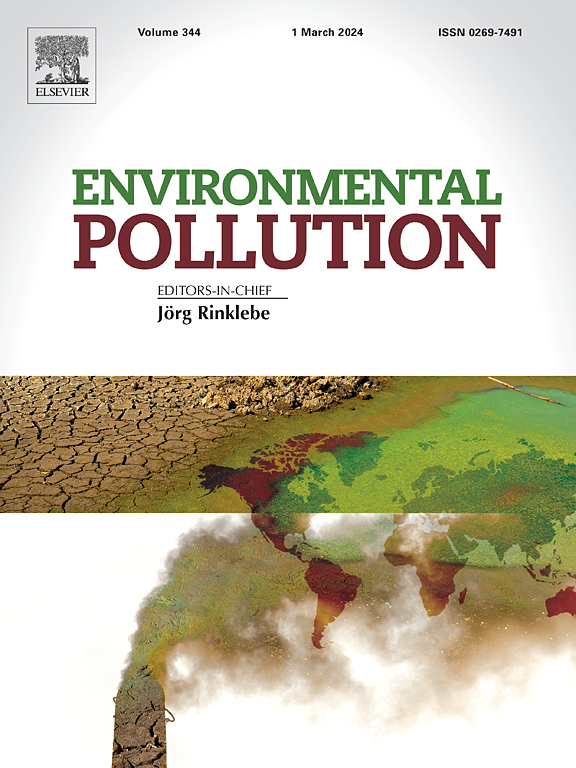斑马鱼体的无监督SAM分割:在黑色素分析中的应用
IF 7.3
2区 环境科学与生态学
Q1 ENVIRONMENTAL SCIENCES
引用次数: 0
摘要
斑马鱼一直是研究人类健康的有价值的模型。它们的透明度使其非常适合观察黑色素的合成。此外,它们与人类的高度遗传相似性有助于研究人类疾病,包括色素沉着障碍。然而,准确量化斑马鱼中的黑色素对于确定抑制剂的功效至关重要。本研究研究了暴露于不同浓度的1-苯基2-硫脲(PTU)和α-熊果苷的斑马鱼的黑色素含量。为了提高准确性并减少与黑色素定量相关的人工工作量,我们采用新兴的片段任意模型(SAM)对斑马鱼进行无监督图像分割。该模型显示出较高的准确率,生成能够描绘斑马鱼身体的身体面具的准确率达到100%,自动选择合适的身体面具的准确率达到96.7%。然后通过这些掩模内像素级的整合来计算黑色素含量。总的来说,随着抑制剂浓度的增加,黑色素的合成受到抑制。这种方法可以实现更精确的量化,同时最大限度地减少人工工作量。该方法可产生与现有方法相当的定量结果,同时提供更简单和更精确的方法。本文章由计算机程序翻译,如有差异,请以英文原文为准。


Unsupervised SAM segmentation of zebrafish body: Application to melanin analysis
Zebrafish have always been a valuable model for studies on human health. Their transparency makes it highly suitable for observing melanin synthesis. Moreover, their high genetic similarity to humans facilitates the study of human diseases, including pigmentation disorders. However, accurate quantification of melanin in zebrafish is essential for determining the efficacy of inhibitors. This study investigated melanin content in zebrafish exposed to varying concentrations of 1-phenyl 2-thiourea (PTU) and α-Arbutin. To improve the accuracy and reduce the manual effort associated with melanin quantification, we employed the emerging Segment Anything Model (SAM) for unsupervised image segmentation of zebrafish. The model demonstrated high accuracy, achieving 100 % in generating body masks that delineate the zebrafish body and 96.7 % in automatically selecting appropriate masks. Melanin content was then calculated by pixel-level integration within these masks. Overall, melanin synthesis is inhibited with the increase in inhibitor concentration. This approach enables more precise quantification while minimizing manual effort. The proposed method produces quantitative results comparable to existing methods, while offering a simpler and more precise approach.
求助全文
通过发布文献求助,成功后即可免费获取论文全文。
去求助
来源期刊

Environmental Pollution
环境科学-环境科学
CiteScore
16.00
自引率
6.70%
发文量
2082
审稿时长
2.9 months
期刊介绍:
Environmental Pollution is an international peer-reviewed journal that publishes high-quality research papers and review articles covering all aspects of environmental pollution and its impacts on ecosystems and human health.
Subject areas include, but are not limited to:
• Sources and occurrences of pollutants that are clearly defined and measured in environmental compartments, food and food-related items, and human bodies;
• Interlinks between contaminant exposure and biological, ecological, and human health effects, including those of climate change;
• Contaminants of emerging concerns (including but not limited to antibiotic resistant microorganisms or genes, microplastics/nanoplastics, electronic wastes, light, and noise) and/or their biological, ecological, or human health effects;
• Laboratory and field studies on the remediation/mitigation of environmental pollution via new techniques and with clear links to biological, ecological, or human health effects;
• Modeling of pollution processes, patterns, or trends that is of clear environmental and/or human health interest;
• New techniques that measure and examine environmental occurrences, transport, behavior, and effects of pollutants within the environment or the laboratory, provided that they can be clearly used to address problems within regional or global environmental compartments.
 求助内容:
求助内容: 应助结果提醒方式:
应助结果提醒方式:


